#Turbochargers And Superchargers
Explore tagged Tumblr posts
Text
Unleashing Power: A Guide to Increasing Engine Performance in Your Vehicle
Dive into the world of turbochargers and intercoolers, where engineering brilliance meets automotive performance. Uncover the secrets behind maximizing engine power and efficiency with this comprehensive guide. Keywords: turbocharger, intercooler, engine performance, automotive engineering, forced induction, combustion efficiency, turbocharging technology, intercooling advancements. In the realm…

View On WordPress
#Advanced Engine Control Units#Aftermarket Modifications#automotive#Automotive engineering#car-culture#cars#Combustion Efficiency#Engine performance#Engine Performance Upgrades#Forced Induction#Good Old Bandit#Gud Ol Bandit#High-Performance Camshafts#Increased Horsepower#Intercooler#Intercooling Advancements#News#Nitrous Oxide Systems#Performance Exhaust Systems#Sanjay K Mohindroo#Sanjay Kumar Mohindroo#Sanjay Mohindroo#technology#Turbocharger#Turbochargers And Superchargers#Turbocharging Technology#Unleashing Vehicle Power#Vehicle Tuning Guide
0 notes
Text

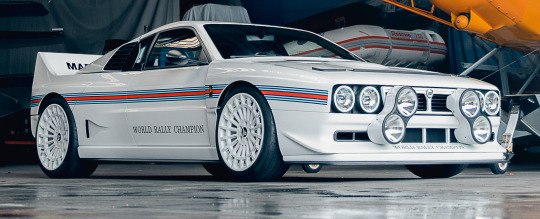
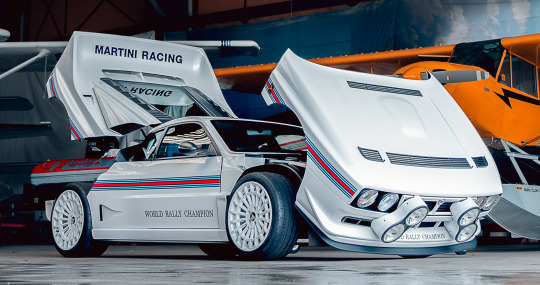
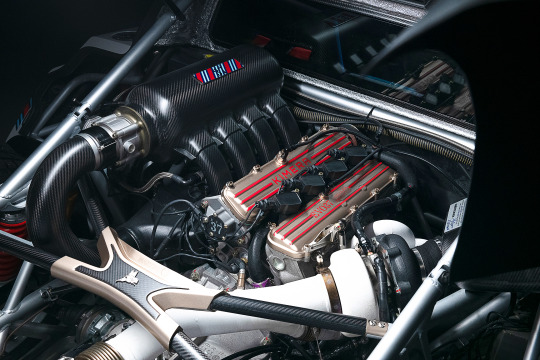
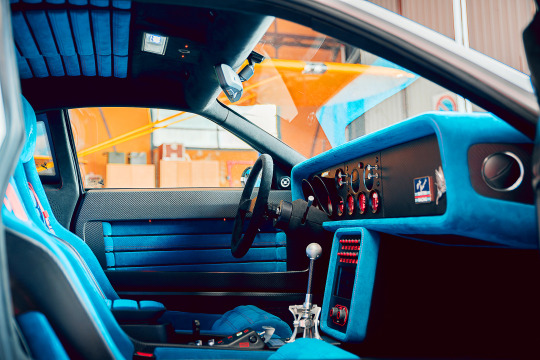
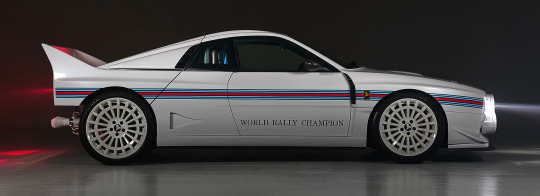
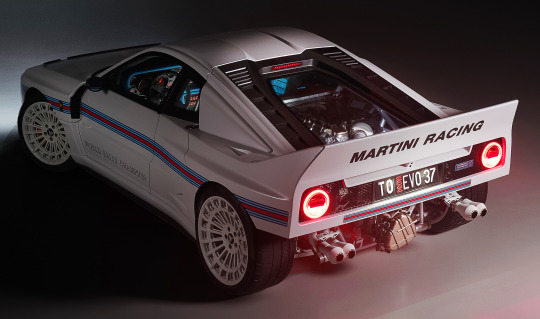
Kimera EVO37 "Martini 7," 2023. Kimera Automobili have revealed a new limited-run version of their Lancia 037 replica that pays tribute to Martini Racing’s iconic Group B racer. Production will be limited to 37 cars which are built from scratch using a monocoque chassis fabricated from tube steel covered with carbon fibre panels. There's also a new carbon fibre aerodynamics package. The engine references the Lancia original, with a 2.1-litre 4-cylinder DOHC motor that is both turbo and supercharged to produce 543bhp. Development has been overseen by one of Lancia’s original powertrain engineers, Claudio Lombardi
#Kimera#Lancia 037#Kimera EVO37 Martini 7#"#Kimera Automobili#2023#replica#tribute car#limited edition#special edition#mid-rear engine#turbocharged#supercharged#DOHC#Martini Racing
905 notes
·
View notes
Text
1 note
·
View note
Text
2023 Volvo S60 Recharge AWD Ultimate (Black Edition)
Sedans rock and Volvo's new S60 Recharge, a plug-in hybrid, certainly exemplifies that. Luxury, power and extended mpg. Bingo!
High-horse plug-in hybrid rekindles joy of driving a sedan … Sedans are such a rarity now that it’s a special treat to drive one, especially when it’s a sophisticated looking, high-horse plug-in hybrid from Volvo. You may recall a time when Volvos were boxy and boring, but safe as the vault at Fort Knox, assuming it still has one. This week’s thriller was the Volvo S60 Recharge AWD Ultimate…

View On WordPress
#2023 Volvo S60 Recharge AWD Ultimate#Black Edition#Bowers & Wilkins#featured#Google-based#luxury sedan#Nappa leather#plug-in hybrid#supercharged#turbocharged
0 notes
Text
Most of you have never driven a car that's got a supercharger on it. Despite mass-media's glorification of the humble Roots (and even the inferior screw-type,) production automobiles have, at best, a turbocharger. Aftermarket cars? Turbos are cheap as hell from AliExpress, slap 'em on there.
The humble supercharger is dying out, between "it costs more to make," "you actually have to maintain it," "belts are icky," and "it caused my fuel economy to poop off a cliff." I think this is a little disappointing. We've lost our heritage as far as Mad Max-style blower whine goes. And that's on gas cars, the exclusive province of "maybe this is a bad idea, but it makes a cool noise."
Even though the sound of an IGBT-stuffed inverter spooling up and getting its gallop on is certainly exciting, there's no way we can put a supercharger on top of an electric car. It will simply cease to exist, lost along with the internal-combustion engine in favour of effortless, abundant torque from any speed.
Don't worry, though. I've got a solution. Many people don't know this, but the Roots supercharger originates in mineshaft ventilation. Bossmen kept having their workers run out of oxygen and die deep underground. The solution? Build a giant machine that pumps compressed air down the mineshaft, and make those ungrateful labourers suck in fresh air whether they like it or not. Sure, a couple lungs were popped, and even the dumbest forum tuner will tell you that the increased air-fuel ratio forced a lot of miners to eat a bigger breakfast, but it worked out. And it can work out for ourselves in this great new modern era.
If there's one thing that electric cars don't currently have, it's good air conditioning. Keeping the humans inside comfortable is simply too much of a drag on current. By cutting a hole in the roof, and then welding a Roots-type supercharger onto that roof, we can easily ventilate the cabin enough to blow the windows out of the doors. Sure, it does mean quite a bit of parasitic loss (that's engineer for "it's kinda hard to push until it really gets going,") but I think it's worth it to preserve our culture. Also, you should really wear ear protection while you're sitting that close to it.
112 notes
·
View notes
Text
compiling information about the kineema, because I'm normal
hi. you may remember me from this post talking about how the kineema doesn't have a hood. I've decided to compile all the *other* info I can get on the kineema and comment on it. hopefully this is okay to read
---
let's start with what I could find on fayde
INTERFACING - With its air-cooled, rear-mounted twelve cylinder compression ignition engine driving the rear wheels through a four-speed manual gearbox, the Kineema is able to reach 100 kilometres per hour in 13.5 seconds. And go on to a top speed of 180 kilometres an hour. YOU - Won't it roll over in the first sharp corner? INTERFACING - The high centre of balance is offset by a large battery bank mounted at the bottom of the cabin, feeding all the auxiliary systems and making the Kineema effectively a mobile power plant.
air-cooled: no radiator. I assume this is what those big heat-sink looking things on sides of the engine are for
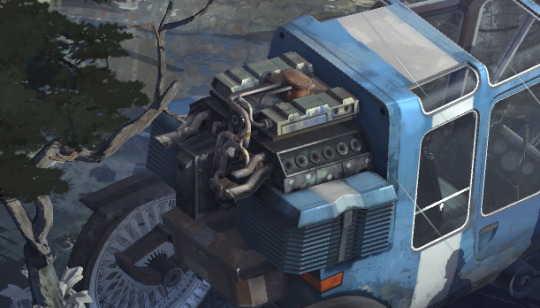
compression ignition engine: diesel, no spark plugs (diesel engines are named after a guy, rudolph diesel, so I guess in elysium they didn't do that)
rear wheel drive: this is pretty obvious just looking at the thing
100 kilometres per hour in 13.5 seconds: not very fast acceleration compared to modern cars, but the history of cars in elysium is obviously very different to irl
battery bank: this is the only thing keeping the kineema from tipping backwards onto its ass as soon as you accelerate
YOU - "What's it packing there?" (Point to the engine.) KIM KITSURAGI - "Hundred-and-thirty." INTERFACING - I reckon that's a seven-litre V12 there. ENCYCLOPEDIA - Man, that's got to be a major advancement over the KR18GU engine on the old Coupris 40. YOU - "Wait, hundred-and-thirty what?" KIM KITSURAGI - "Kilowatts," the lieutenant replies laconically.
130 kilowatts: ~174 horsepower
YOU - "That's what..." (Rub your chin.) "... a seven-litre V12?" KIM KITSURAGI - "Seven-point-two. Supercharged." The lieutenant is trying to suppress a smug smile. Unsuccessfully. EMPATHY - Saying these words brings him immense joy.
7.2 litre engine: space inside the cylinders. 7.2L/12 = 600cc per cylinder
supercharged: has a supercharger. forces more air into the engine, powered by the crankshaft (as opposed to turbochargers which are powered by the exhaust)
YOU - Run your fingers over one of the steering levers. COUPRIS KINEEMA - The white suede feels luxurious under the touch and the metal clutch handle so very familiar in your palm... INTERFACING - Your fingers waste no time closing around the handle. Clutch disengaged. Release the handle -- clutch drops -- right foot yearns for the familiar touch of the accelerator pedal. You have synced with the machine's mechanical circulation.
YOU - "A *driver* would wear down their right shoe before the left -- the accelerator is on the right. And remember that abandoned lorry cabin we found?"
steering levers: instead of a steering wheel. not exactly sure how they'd work. I *really* don't want it to have differential steering like a zero-turn mower looking at this video of kim driving it looks like the front wheels are the ones steering
clutch handle: instead of a pedal, the clutch is a handle on one of the levers. seems that accelerator and (probably) brake are still pedals
accelerator is on the right: does everyone left-foot brake??? I guess if the clutch handle is standard then that would make sense
ABANDONED LORRY - The glass on the side windows is tinted and covered with dust. You can barely make out the shape of a seat and two steering levers. [...] YOU - Check the pedals. ABANDONED LORRY - You wedge yourself under the steering-wheel to get a better look. Seems like the few tools lying around here -- a hammer, a pair of pliers, a rusty wrench -- have been casually thrown there by the disorganized driver. ABANDONED LORRY - But one odd detail does catch your eye: A piece of sandpaper has been glued to the throttle.
STEERING WHEEL TYPO
---
alright, let's actually take a look at this thing


two door: the kineema has a single driver's seat and two seats in the back. looks like you'd need to move the front seat forward to let anyone else in
suspension: the back wheels look like they have some sort of spring (the axle is connected to it, so how are the wheels being driven??? same with the coupris 40). I assume the front arms also act as a spring
rear view mirror: looks like there's no rear view mirror, since you wouldn't see shit
aerodynamics: bad
seat belts:
¯\_(ツ)_/¯
188 notes
·
View notes
Text
Twin charge setups have always been interesting for me. It utilizes a supercharger paired with a turbocharger in an attempt to get the best of both worlds. In the early to mid 2000s, a few top tuners like Bee*R & Top Secret made demo cars to showcase their work. Most people have heard about the S15, but few have seen the Z33. I wonder how the VQ must have felt?
📚: Option x D-Car 2006





38 notes
·
View notes
Text
Que signifie les lettres apposées à l'arrière des voitures
L longer wheelbase
GT grand tourer
T turbo
KS supercharger
I injection électronique
FSI fuel stratified direct injection
TCI turbocharged intercooling technology
VVT CVVT variable valve timing technology
GDI CGI CDI in cylinder direct injection
VTEC variable valve generation technology
4WD 4×4 AWD 4wheel drive
VX TXL mind range configuration
TX low allocation
17 notes
·
View notes
Text
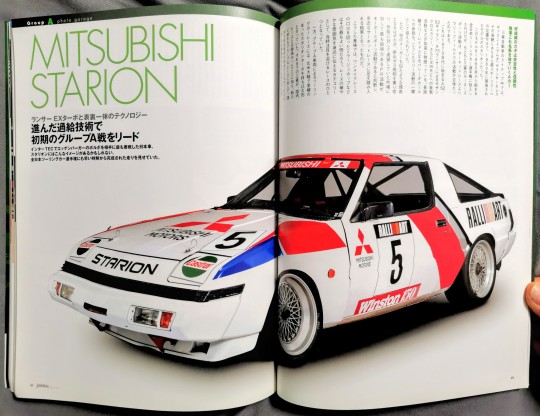

MITSUBISHI STARION
Technology that is inextricably linked to the Lancer EX Turbo
Leading early Group A races with advanced supercharging technology
The Japanese car that fought best against Eggenberger's Volvo at the Inter TEC. Starion may have such an image. In the All Japan Touring Car Championship, he showed a perfect run from an early stage.
Stability and reliability are the keys to good results A-car that makes it to the ground safely
In the lineup of Mitsubishi Motors, the model developed in 1982 was the Starion, positioned as a high-end sports coupe that was the successor to the Galant (Lambda) and Lancer Celeste.
This model was introduced in the All Japan Touring Car Championship that began in 1985, but Mitsubishi's motorsports activities were originally focused on rally fields rather than circuit races.
This is clearly evidenced by the A53/55 Galant, the Southern Cross Rally with the AR73 Lancer, and even participation in the WRC, which began in the 1970s. Participation in the long-distance rally raid from Paris to Dakar was also seen as part of these rally activities.
However, for other manufacturers, for similar reasons, the most convincing PR activity for a market that was hungry for performance while surviving emissions regulations was motorsport. It was a result of making a decision and stepping into the circuit race at hand.
In this sense, the Mirage Cup, which started the one-make race, is probably the best example. As a category that conveys the glamorous atmosphere of racing, it was one of the races that attracted attention at the time.
On the other hand, in the touring car race of Group A vehicles, the Starion Turbo, which had a proven track record in the North American continent, was brought in. One of the reasons for this was that until then, Mitsubishi had had little to do with domestic races, and that they could not find a suitable car to participate in the newly-started Group A race.
This is also the case with Nissan's Group C cars, which used the proven mechanics of the IMSA series in the form of "reverse imports."
Well, that Stallion is equipped with a G63B type 3-valve SOHC + turbocharger engine. Mitsubishi had accumulated turbocharging technology with the Lancer EX2000 for WRC. The engine type of the Lancer EX2000 Turbo is the 4G63 type (different from the 4G63 type of 4-valve DOHC used in the Lancer Evolution series later. It is the SOHC 2-valve engine that became the prototype of this), and the basic part is Stallion's
Common with the G63B type. Looking back on these circumstances, Mitsubishi had a certain amount of experience and confidence in the basic mechanisms and content that make up the vehicle.
The first Stallion that appeared in such a background was InterTEC in 1985. After that, Akihiko Nakatani, who became the main driver of the Stallion, was combined with M. Liu and Fumio Mutoh to finish 4th overall. Considering that the 1st and 2nd place was the Volvo 240 Turbo and the 3rd place was the BMW 635CS, it was a good result, what happened to the other Japanese cars?
Then, from 1986, Kunimitsu Takahashi and Akihiko Nakatani teamed up to participate in the All Japan Touring Car Championship series on a regular basis. He finished 5th in Round 1 and 3rd in Round 2, and in Round 3 at Tsukuba, he finally won his long-awaited first victory.
At this time, the opponent was Takao Wada/Aguri Suzuki's Skyline RS Turbo, and although they conceded the series championship, they were always on even terms and won the 2nd place in the series. He had become a presence respected by other entrants.
The following year, 1987, they maintained their first-class competitiveness and got off to a great start with two consecutive wins at the opening of West Japan and West Sendai. After that, he continued to lose races due to trouble, but he managed to win the series ranking 3rd place thanks to his savings in the early stages. He has proven that he is still a first class contender.
In 1988, the Skyline fleet changed to the HR31 type, the Sierra RS500 increased, and the Supra entered the war. The SOHC system engine was already severe, and the chassis performance had reached the stage of review.
In terms of results, the 2nd place in the match against Nishi-Sendai was conspicuous, and the number of cases where other division 1 cars fell behind was increasing.
On the other hand, the wide-body GSR-VR (1987) was launched on the market during this period, and the basic performance was slightly improved, but compared to the trend of rival cars, the progress of evolution was not good. He took small strides and eventually withdrew from Group A racing in 1988.
After that, Mitsubishi's motorsports activities shifted to Group A rally cars with turbo 4WD starting with the Galant VR-4, and after the release of the Lancer Evolution series, it became a WRC top contender until it captured the world title.
Even so, in 1986, when the race began in earnest, the Stallion, whose basic design was already outdated, was able to achieve such a good track record. It's nothing but Taka.
At the 1986 Inter TEC, which was the debut race, it was exciting to see the Stallion running fast and make the Volvo team say, "What is that car?"
62 notes
·
View notes
Text
Maximizing Engine Power
https://gob.stayingalive.in/unleashing-the-thrills-of/maximizing-engine-power.html The Comprehensive Guide to Turbochargers and Intercoolers: Unleashing Performance and Efficiency in Automotive Engineering Unlock the full potential of your vehicle with this comprehensive guide to aftermarket engine modifications. From turbochargers to performance exhaust systems, discover how to enhance…

View On WordPress
#Aftermarket Modifications#automotive#Automotive Excellence#cars#Engine Control Units#Engine performance#Good Old Bandit#Gud Ol Bandit#Longevity#maintenance#Maintenance Tips#Motorcycles#News#Performance Exhaust Systems#Reliability#Sanjay K Mohindroo#Sanjay Kumar Mohindroo#Sanjay Mohindroo#Superchargers#technology#Turbochargers
0 notes
Text
One of my favorite linguistic curiosities is how the the prefix “turbo-” has become a common and generic superlative, despite the fact that its actual meaning doesn’t strictly indicate such a hierarchy. It’s not like “super” or “ultra” or “mega” that afaik have such origins, …it just means that there’s a turbine involved somehow. A spinning, finned disc that turns gas or liquid flow into mechanical rotation.
But since it was introduced to the public vernacular through automotive and sometimes aeronautical advertising that lauded the improved performance of turbocharged engines and supercharged engines, “turbo” joined “super” to become synonymous with “better than it would otherwise be”.
24 notes
·
View notes
Text
Yesterday I watched Arcane season 2. I had many thoughts and opinions about season 2.
But the biggest thought that went through my head was: How did Arcane shape shipping?
Specifically how Arcane has shaped what ships Fanfic writers have predominately written about.
So using Internet Archive’s Wayback Machine, and taking the data from AO3, which was literally me clicking on the relationship tab and seeing what the top fics were, I made some discovery’s.
The results should not surprise you, but I’m still compelled to write about it anyway because it’s been driving me insane.
There are disclaimers at the bottom that I find interesting, and add context, but are minimally impactful to what I’m going to write.
There may be some spoilers for who the most popular ships are, but I'm not going to actively discuss why those characters are the most popular ships, nor talk about the canonicity of said ships. Still, if you don't want to know anything at all about Arcane at all, especially which characters share a bond that could be described as romantic, then I'd advise you don't continue reading. Particularly for season 2, where I discuss a particular pairing. (I only mention that they get close/closer/meet/interact in season 2, not any specifics). I also mention that a character does not appear in Arcane.
Let’s start with a baseline:
As of Janurary 27, 2025, the League of Legends most popular ships are:

Not really surprising.
On January 14, 2021 League of Legends shipping looked like this:

Now the big things to note here is A) Akali/Evelynn is the top of the chart. B) Caitlyn/Vi is the second most popular pairing. C) Neither Jayce/Viktor, nor Ekko/Jinx are popular enough in the LoL community on AO3 to warrant enough fics to make this list. There is a little bit of interesting history here. Sometime between July 25th and December 11th, 2019, Caitlyn/Vi had gone from the most popular pairing to second most popular pairing behind Akali/Evelynn.
Next date October 16, 2021

This was the closest date I could find before Arcane released (there is a date that is closer after Arcane released, but I'll talk about that in a moment). This shows a very interesting: Over ten months: Akali/Evelynn had added 177 fics, Ahri/Kai'Sa had added 132 fics. Ahri/Evelynn, which hadn't been on the list had added at least 62 fics. Caitlyn/Vi had added 26 fics. The K/DA group was winning the shipping. Caitlyn/Vi had been relegated, and likely Ahri/Evelynn was looking to take it's place in the (relative to pre Arcane fic production level) near future.
Then Arcane Season 1 released on November 6th, 2021.
On November 11, 2021

Caitlyn/Vi had added 17 fics in a one month time frame. Akali/Evelynn had added 5 fics, Ahri/Kai'Sa had added 0 fics. Now, by this point, Caitlyn and Vi hadn't even interacted. (This was after the release of Arc 1, the first three episodes of Arcane). But there is a notable shift from, presumedly from information about future episodes such as trailers, that invigorated (or reinvigorated old fans of the ship) to create new fics of the two.
The next available date on the Wayback Machine is November 27, 2021, after the end of Season 1.

I would have loved to see the information at the end of Arc 2. How long did it take the Cait/Vi writers and Jayce/Viktor (who, unlike Cait/Vi had interacted in Arc 1) to get going. After Arc 2, or did it wait until the end of the first season? In any case, it's clear by now that Arcane had done two things: Reignited a ship that was starting to fall behind, and turbocharged a new ship.
November 29, 2021

Not much to say here, except the supercharge for both continue.
December 7, 2021

Return of the Queen(s). Honestly, at this point the trend is clear. Jayce/Viktor was clearly going to overtake Akali/Evelynn soon from this point. So, we're done. Cait/Vi and Jayce/Viktor are at the top, and probably anticipate to stay there for quite some time.
But.... isn't there another pairing who was completely absent from the original list on January 14, 2021? Who's popularity is almost entirely surrounded by Arcane?

Well... Jinx/Ekko clearly was a season 2 thing. So there shouldn't be any shock about the fact they don't make the cut after season 1.
Here is the list on October 10, 2024.

One month before Season 2 is released, Ekko/Jinx is in 9th place. Now it's popularity is clearly inflated by the presence of Season 2, adding 380 fics, more than doubling. Still, why is it on the list in 2024 before season 2, but not in 2021, after season 1?
But, Ekko and Jinx interacted in Season 1. Maybe it was a bit of a delay. Fics aren't instantaneous, and maybe it was just right behind Malcom Graves/Twisted Fate? The 11th most popular pairing that was going to eclipse them soon.
This is... sort of the case. Somewhere between January 29th, 2022 and March 4th, 2022, Ekko/Jinx would become the 9th most popular pairing.

So... there we are. Arcane has clearly changed the landscape of LoL shipping, in the same way that I imagine K/DA did, (though on a much more intense and broader scale, as seen by the pure number of fics).
You have some clear older pairings that have remained somewhat popular. LoL has clearly been doing other things in the background that isn't Arcane that has also shaped shipping. Ezreal/Shieda Kayn appears sometime between March 4th, 2022 and October 10, 2024 and outperforms Ekko/Jinx until Season 2 of Arcane.
But by far, the biggest driver of shipping has to be Arcane. Six of the top ten most popular 'ships' (including three friendship tags for characters), are full Arcane ships (in which both characters appear in Arcane), and an additional ship is a half Arcane ship (involving a character from Arcane, and a character not from Arcane.) Compared to prior to the show being release, where only one pairing of the top ten would be considered today a full Arcane ship, and another would be a half Arcane ship, this showcases how much the shipping landscape has changed.
This wasn't a project I intended to do. It started with a thought. I wonder how popular Jayce and Viktor were before Arcane. I then lost about three hours of my life.
Damn.
Anyway disclaimers below:
Disclaimers:
1) This is not a thoroughly researched paper, nor should it be considered as such. This took me an hour of research (and two hours writing), and honestly most of it was doublechecking the dates. Because of that:
1a) I only use AO3. If I was being serious and doing a more in-depth research, I would have also done research on at least Fanfic.net, and a more general search online of where LoL fics are located. But AO3 is honestly the easiest to navigate, and as the most popular one should show enough of the pattern to make a generalized statement on my non academic post.
2) As anyone who has used the wayback machine can tell you, the wayback machine are ‘screenshots’ of a particular moment in time. It is not updated constantly. Particularly for something a bit… niche like this. For example, the first sceeenshot I could find for LoL fics on AO3 is November 7, 2012, which has 7 fics: one labeled maybe romance, one gen fic, two M/F but no ships attached (though one fic does have Morgana and Katarina as the only two characters listed, so I’m guessing them, the other has Jarvan Lightshield IV, Pantheon- The Artisan of War, Hagurashi Kagome as the tags), one Miss Fortune/Twisted Fate fic, one Garen/Katerina fic, and one Ezreal/Shyvana | Jarvin IV/Shyvana fic. The next date is November 9th, same fics. After that is January 24th, 2013, with 15 fics. So some dates are used not because they make the most sense, but because they are the closest date I could find to the date that would make the most sense.
This brings up an interesting point:
2a) Fics disappear. One of the fics I mention no longer seems to exist on AO3. That means that, especially as we approach the more modern day, a lot of fics may have disappeared. So if I say: there were 100 fics about Vi/Cait, that means when the screenshot was taken there were, at that time, 100 fics about Vi/Cait on AO3, and not that there were only 100 Vi/Cait fics ever posted on AO3 before that point.
3) I am not a LoL fan. I enjoyed Arcane, but beyond Arcane and some TB Skyen shorts I’ve watched, I know nothing about LoL and its world. If you had asked me before December 2021 (when I first watched Arcane season 1) I could have identified: K/DA (though I would not have known they were related to LoL), and Jinx. My knowledge has only improved based entirely around Arcane. (And TB Skyen shorts)
4) I touch upon this briefly, but Jinx/Lux is an interesting case. Similar to Caitlyn/Vi it appears in the top ten list the entire time I check, so it had some popularity before Arcane came out. But... Lux isn't in Arcane. I can't speak to the appeal that Jinx/Lux has in the same way that I could for Cait/Vi, Viktor/Jayce, or Ekko/Jinx. I have theories on why it's popular, and why it became supercharged in it's popularity since Arcane, but that is well outside the scope of what I actually researched and am presenting, and would require much more research than I want to do. I'm looking into: Did fics involving pairings increase after show began, not why did certain pairings become much more popular instead of others.
Last Note:
I don't use Tumblr much anymore. I stopped opening the App on a daily basis 5-6 years ago. I check maybe every few months. I had one 'viral' post. The email attached to this Tumblr account is one I never use anymore.
I always told myself that once I became an author I'd return to Tumblr. Realize my dreams. That's not progressing the way I'd hoped. And I'm honestly probably happier for it.
I do publish fanfics of my own, but honestly not that much. (Check out Madwolf023 on AO3 if for some reason a demon possessed you while reading this and is now forcing you to read my fics.) When I started using Tumblr I thought I'd be writing fics every day of my life. Spoiler Alert I did not. As with most people, my focus changed. I still love writing, and still I'm more focused on fun research now that I do for myself, and is like this: Scientifically and Academically dubious, but enough to satisfy my itch.
The reason I say this is as a bit of a swan song to myself, an admittance to myself that maybe work in the creative fields isn't for me.
I'll still write, I'll still do the world building I love, which I have done in the years since I stopped using Tumblr.
But... for myself. Not really for the perceived audience I once hoped for.
For anybody who is really interested in this... thank you.
Madwolf023 out.
#arcane#shipping#league of legends#ao3#research#for fun#or more accurately because my brain wouldn't leave me alone about it
6 notes
·
View notes
Text




Even more Vicious. This amazing widebody 1965 “Vicious 2.0" Ford Mustang was built by California’s Timeless Kustoms and debuted in the CTEK Chargers booth, at the 2023 SEMA Show. It’s powered by a 1000+WHP twin turbocharged and Magnuson-supercharged, fully-built 5.1L Ford Performance Aluminator engine (built by Modular Motorsports) mated to an EMCO 6-speed paddle-shifted sequential transmission. It rides on an Art Morrison chassis & suspension, RideTech remote-reservoir triple-adjustable coilovers, Brembo brakes, 305/30ZR19 & 355/30ZR19 Kumho Ecsta V720 (front) & ACR (rear) tires, the Forgeline Flush-Loc centerlock conversion kit (with hex-style center nut), and 19x11/19x13 Forgeline CF3C Concave wheels finished with custom titanium centers & custom matte black outers! See more at: https://www.forgeline.com/customer-gallery-chris-marechel/cgk2676
🇺🇸🇺🇸🇺🇸
#forgeline#forgelinewheels#forgedwheels#customwheels#CF3C#ForgelineCF3C#centerlock#FlushLoc#notjustanotherprettywheel#doyourhomework#madeinUSA#TimelessKustoms#Ford#Mustang#65Mustang#ViciousMustang#SEMAShow#SEMA2023
14 notes
·
View notes
Text

Chevrolet Cruze SS Sedan Concept
What if...Chevrolet returned the Cruze to the Us market and introduced this compact beast of a vehicle? Available in coupe as well as sedan, shown here, it would have a few options of engine configurations according to what stage model you choose from. The SS would have the 2.0L turbo inline 4 cylinder motor. Stage 1 would have a Naturally aspirated 2.4L inline 4 cylinder engine with a lower ride and stiffer springs. Stage II would have a 2.4L with a turbocharger to push out some insane power. And finally Stage III would have a supercharged 2.4L inline 4 cylinder motor pushing out the maximum amount of horsepower ever out of the SS Cruze motor. These engines along paired with a 6 speed manual or 7 speed automatic transmission with a rear wheel drive format exclusively for the SS model. The different stage packages would also offer options as far as exterior and interior colors with stage III offering stripes.
#autos#cars#automotive#classic car#sports cars#coupe#sedan#chevrolet#chevrolet cruze#chevy#chevrolet ss
7 notes
·
View notes
Note
Can you supercharge a boiler?
tldr: no.
tldr but a bit longer: yes but only if your boiler is very ineffective. so no.
long version: How does a Turbo work? The turbine is spun by the exhaust gasses and this drives the Blower (Turbine-blower = turbo) to push more air into the engine, more air into the engine means more fuel you can add to get more power out of the same size engine.
But how does the turbine part work? it is not pushed around by the pressure of the exhaust gasses because that is just over atmospheric (if your engine is designed well), neither is it the speed of the passing gasses that drive it. No a turbine takes energy out of the exhaust gasses in the form of heat.
For example on the engine in the ship i'm on now; Exhaust gas temperature before the Turbine 540°C after 360°C
How does a boiler work? It is a pressure vessel that takes heat (from a fire) to boil water and make pressurised steam. Early boilers had a hot exhaust, to make sure there was a natural draft occurring trough the funnel, pulling fresh air into the boiler.
But engineers very soon figured out that that heat was a loss. and put an "economiser" in the funnel, that pre-heated the boiler feed water. Reducing the exhaust gas temperature.
The better the boiler got in absorbing the heat out of the fire, the less the natural draft worked.
So they supercharged the boilers. 'Forced draft' it is/was called. That meant pressurising the whole room the boiler was placed in, with big electric powered blowers (ventilators).
Modern boilers have an air blower on each burner, (think leaf blower) with special designed fins and blades in the air channel to shape the flame in a certain way for optimum combustion.
So the better a boiler works, the colder the exhaust will be, (all heat from the fire goes into making steam) leaving no energy to drive a turbocharger.
Also a turbocharger on an engine will often push the scavenging air up till 2 to 3 bars. While a boiler blower might only get to 1.05 bar. It's more about making sure fresh air is supplied to the boiler at a good flow. The exhaust trough the funnel is completely open of-course, there's no valves and no compression like in an internal combustion engine. To much air will blow all the heat out of the funnel again. There is a fine balance to be found, to make a boiler work best.
3 notes
·
View notes
Text

The Hottest Release of the Year! 🔥💪
🔹 Supercharge Muscle Protein Synthesis
🔹 Turbocharge Muscle Growth
🔹 Gentle Digestion for Maximum Benefits
Get ready for a revolution in fitness.
The Prime launch is here!
#gym#fitness#gymlife#gym supplements#gymmotivation#wheyprotein#isolate whey#workout#fit#fitspo#healthylifestyle#protein#exercise
2 notes
·
View notes